PNS
1/24
There's no tags or description
Looks like no tags are added yet.
Name | Mastery | Learn | Test | Matching | Spaced |
|---|
No study sessions yet.
25 Terms
Olfactory nerve
smell
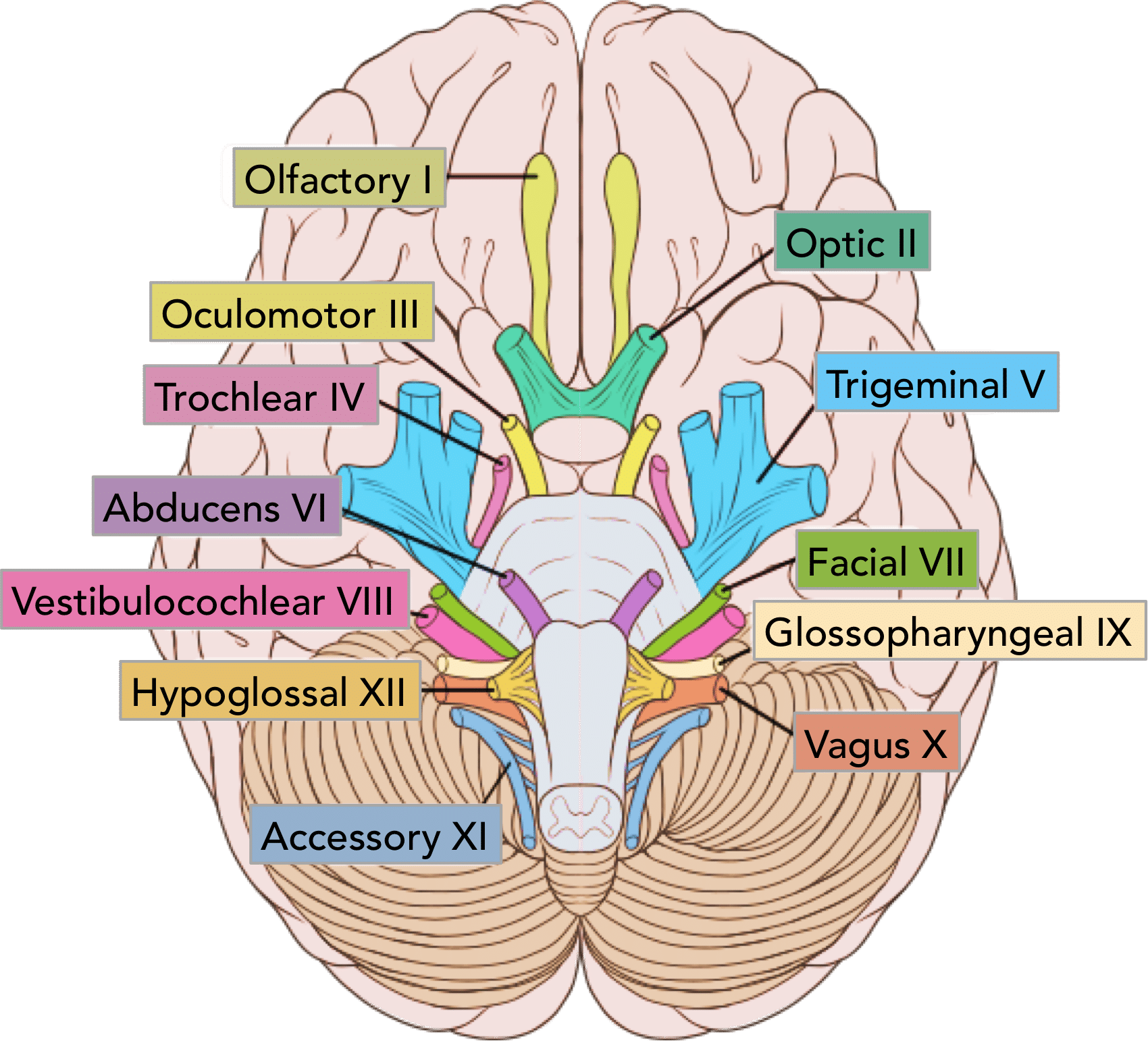
optic nerve
vision
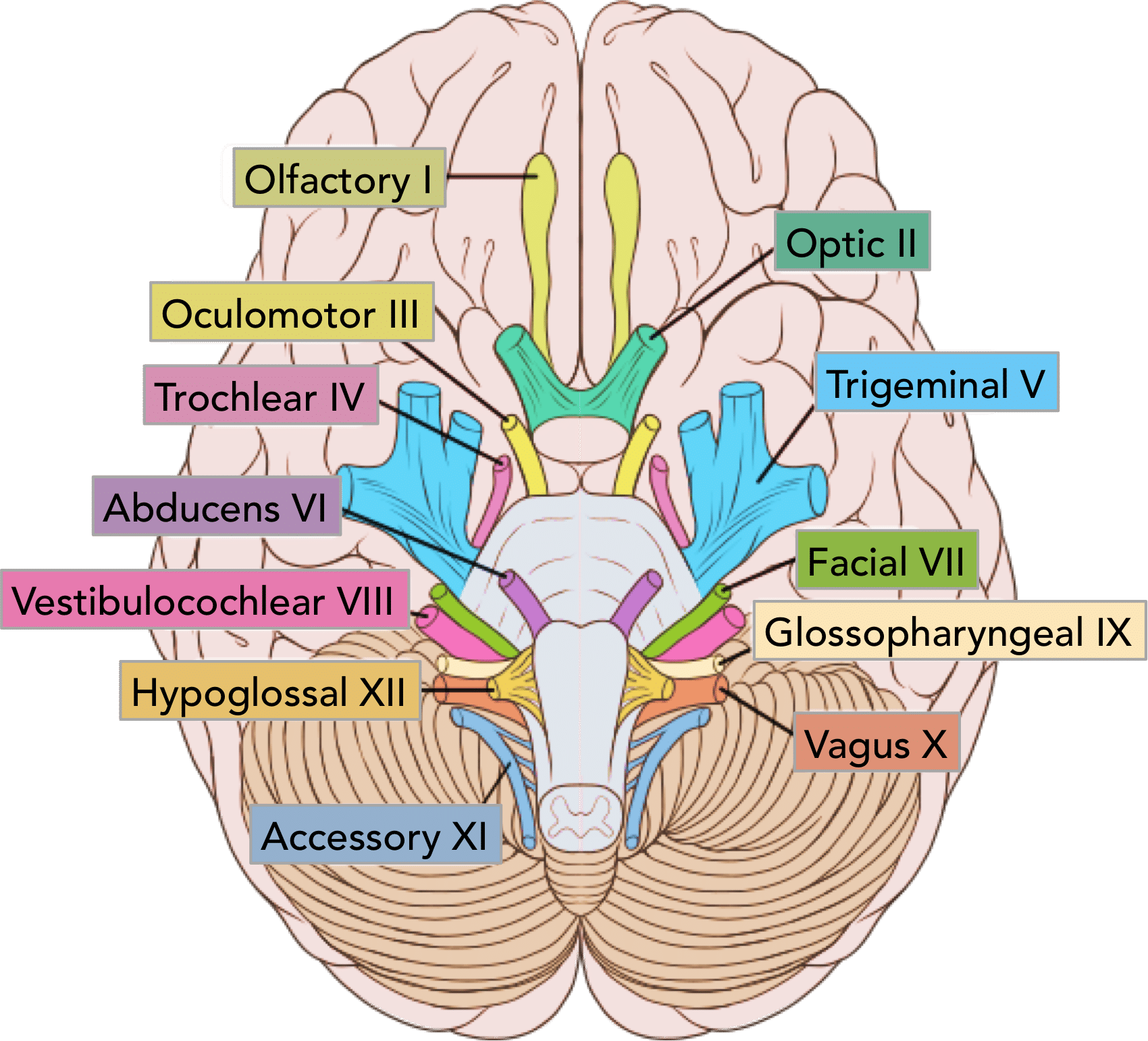
oculomotor nerve
eye muscles

trochlear nerve
Superior oblique extrinsic eye muscle
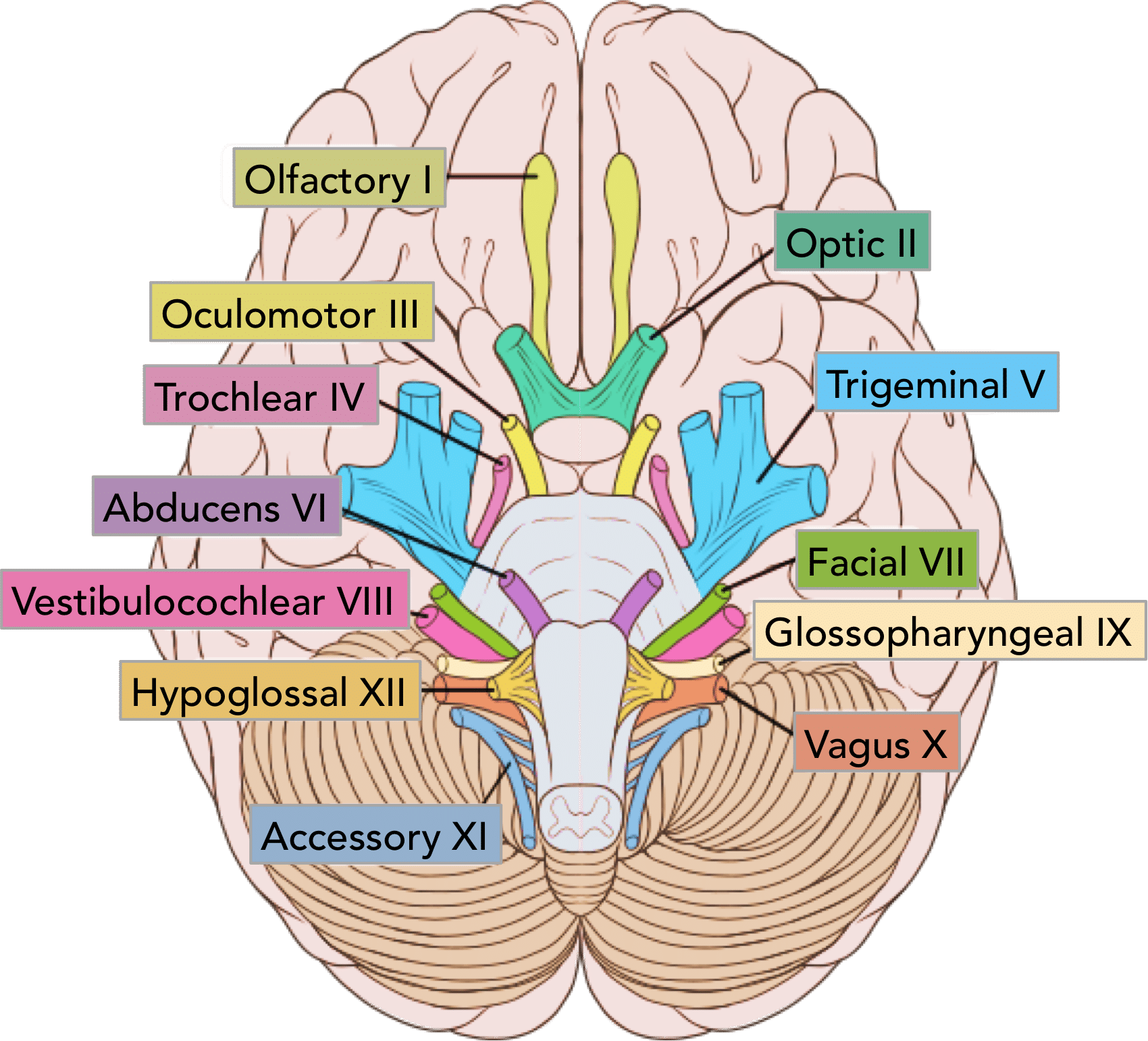
trigeminal nerve
provides motor (movement) and sensory information for different aspects of your head and face
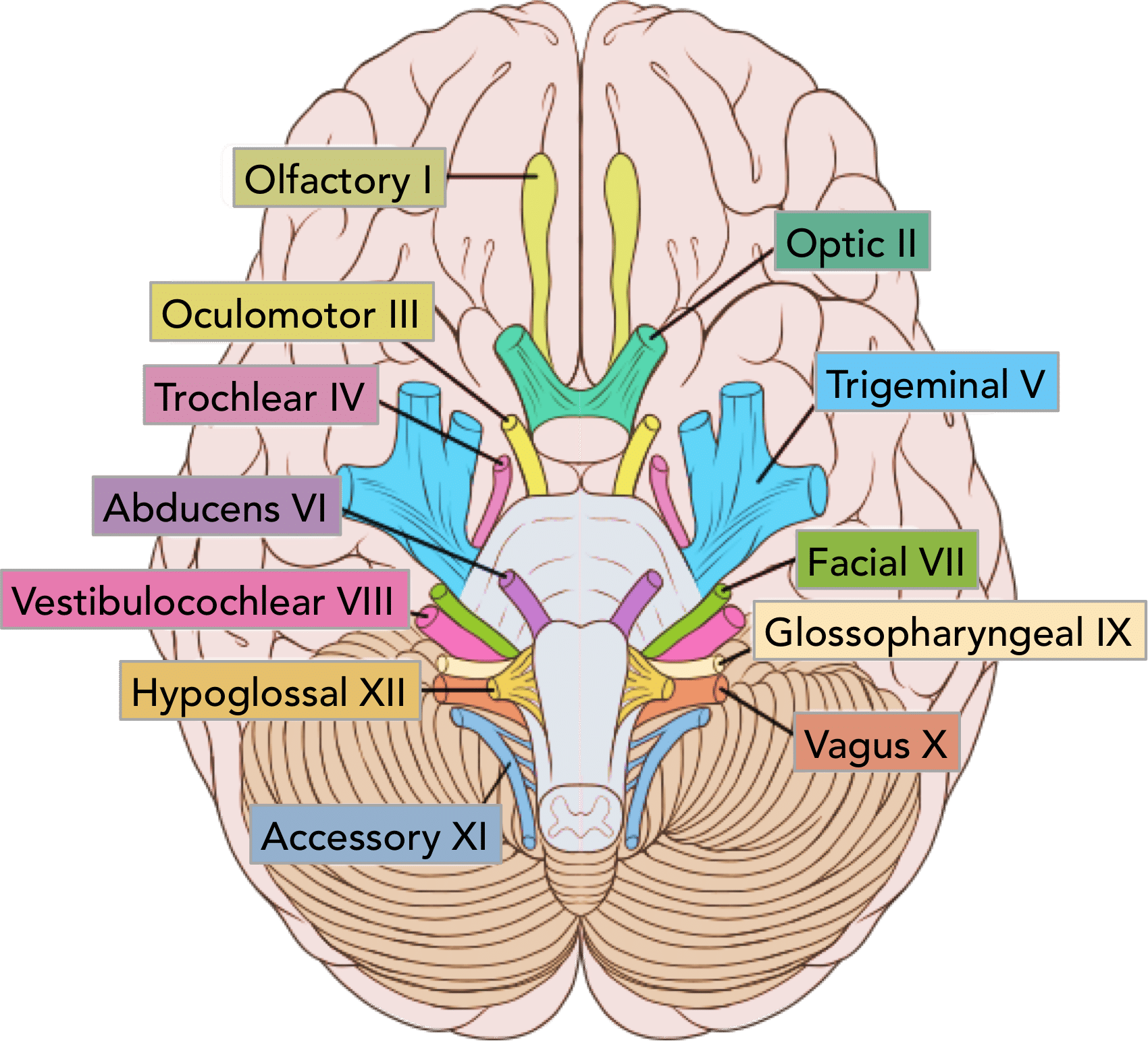
abducens nerve
lateral rectus of eye
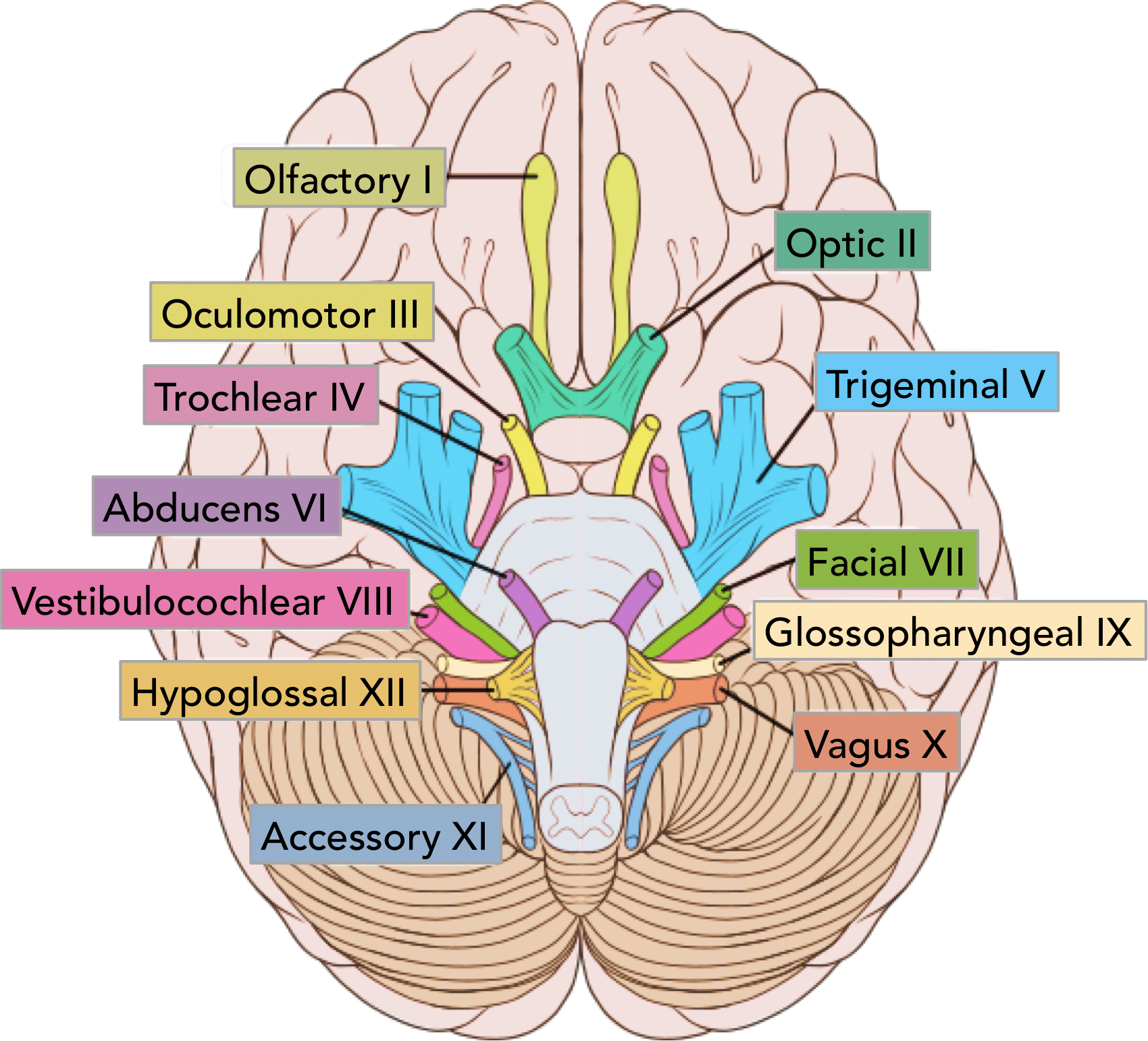
facial nerve
facial expressions
Taste from anterior two-thirds of tongue
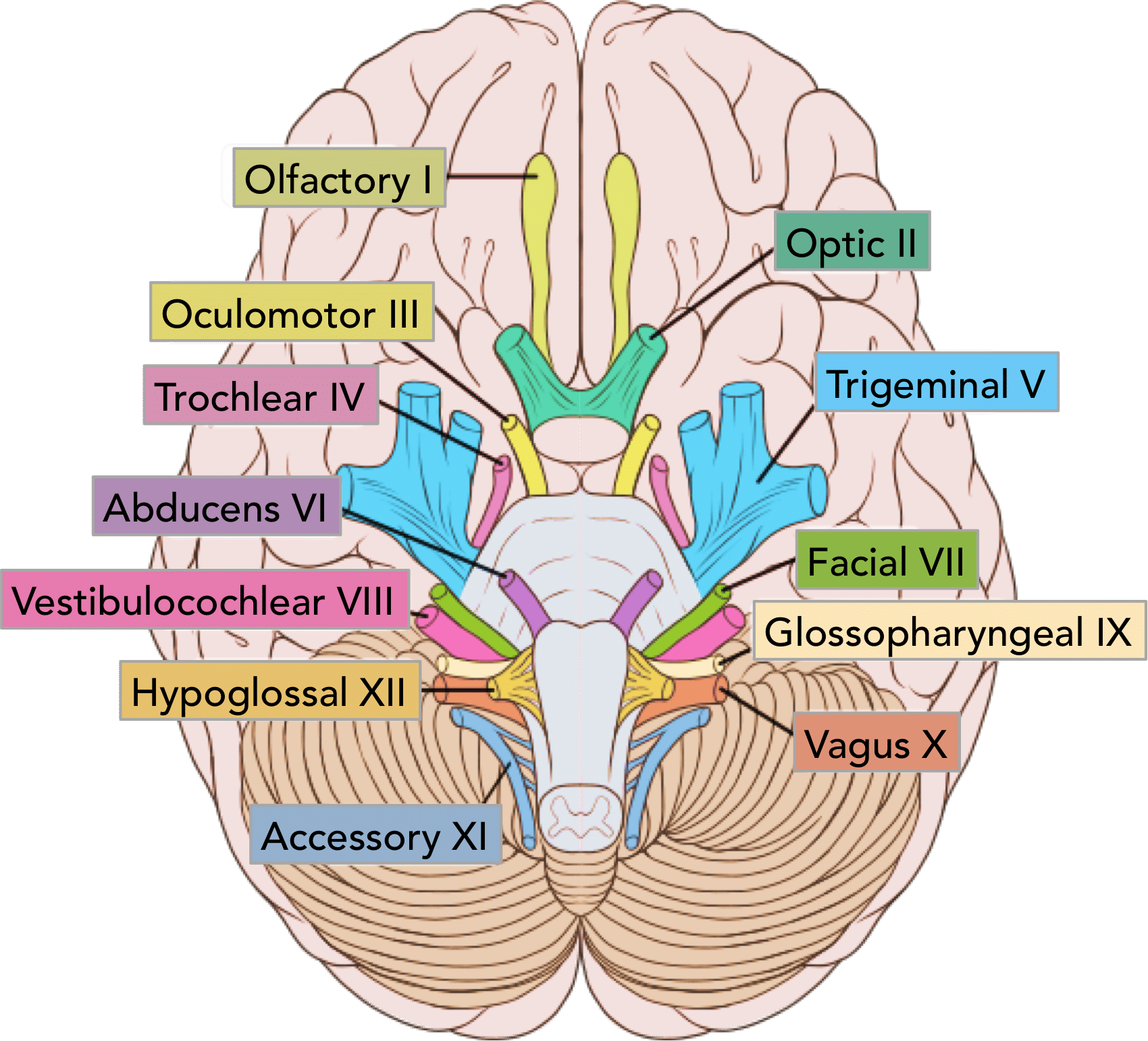
vestibulocochlear nerve
hearing
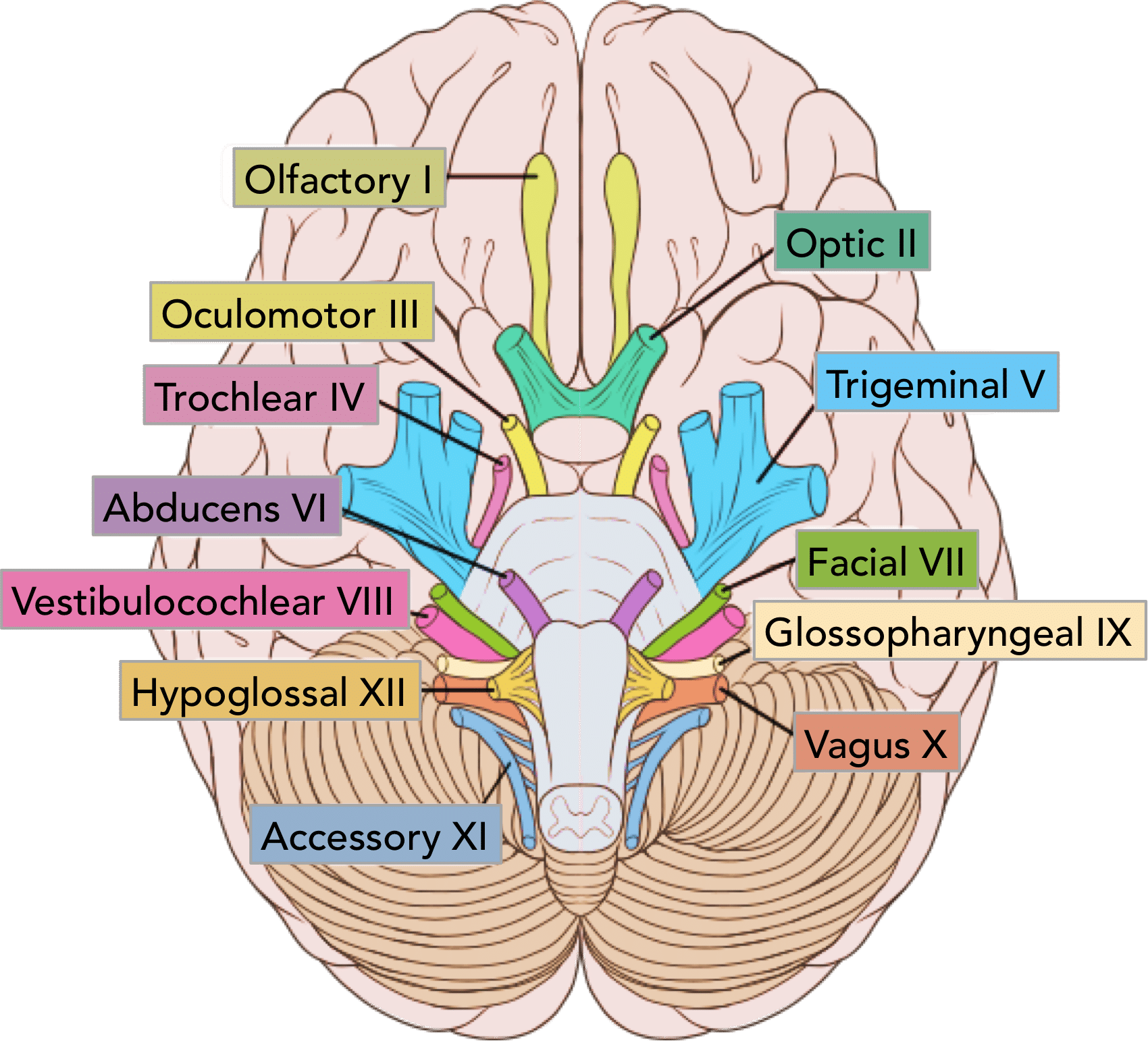
glossopharyngea nerve
General sensory and taste from posterior one-third of tongue
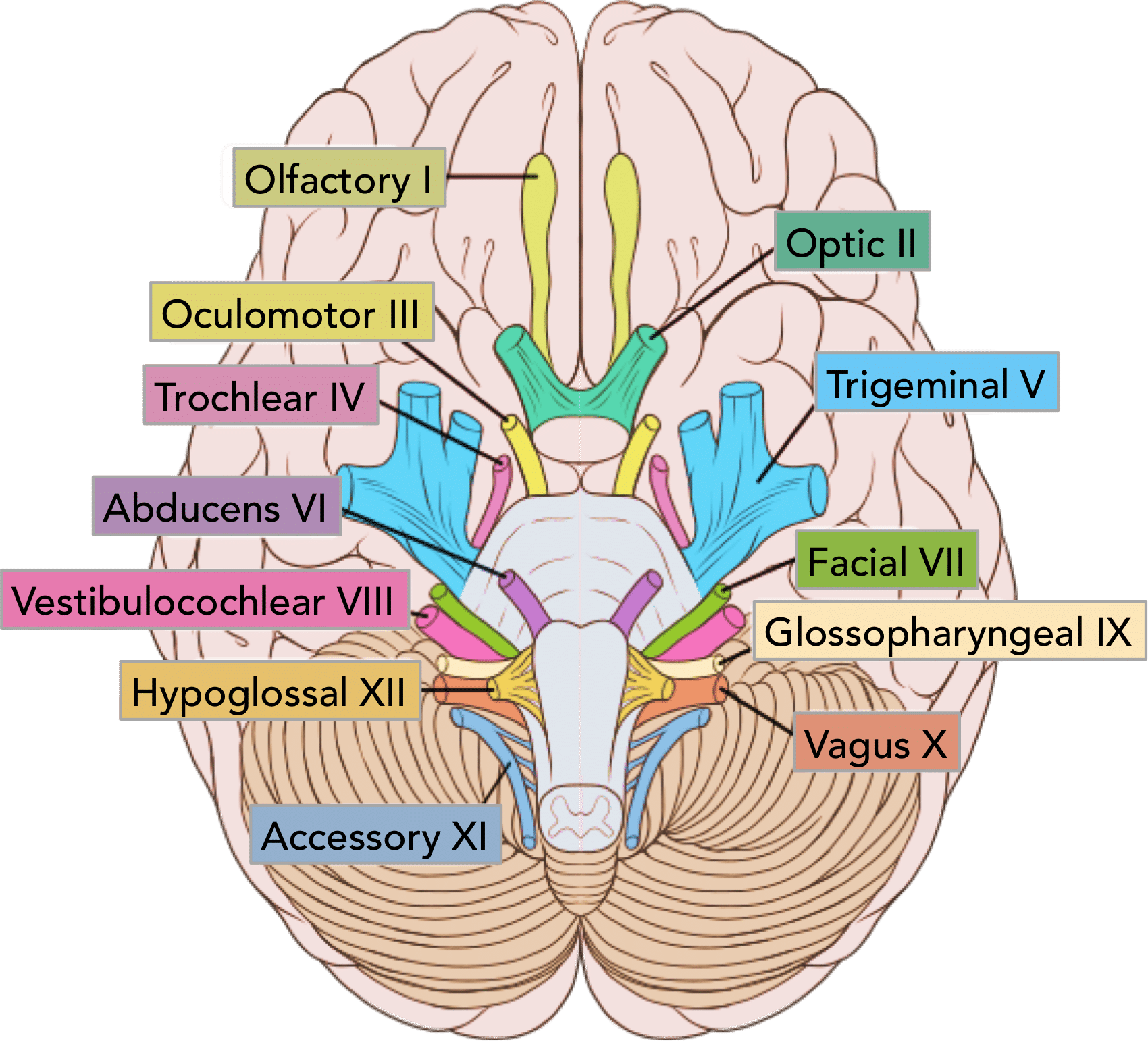
vagus nerve
Visceral sensory information from heart, lungs, most abdominal organs

accessory nerve
controlling the movement of the sternocleidomastoid and trapezius muscles.
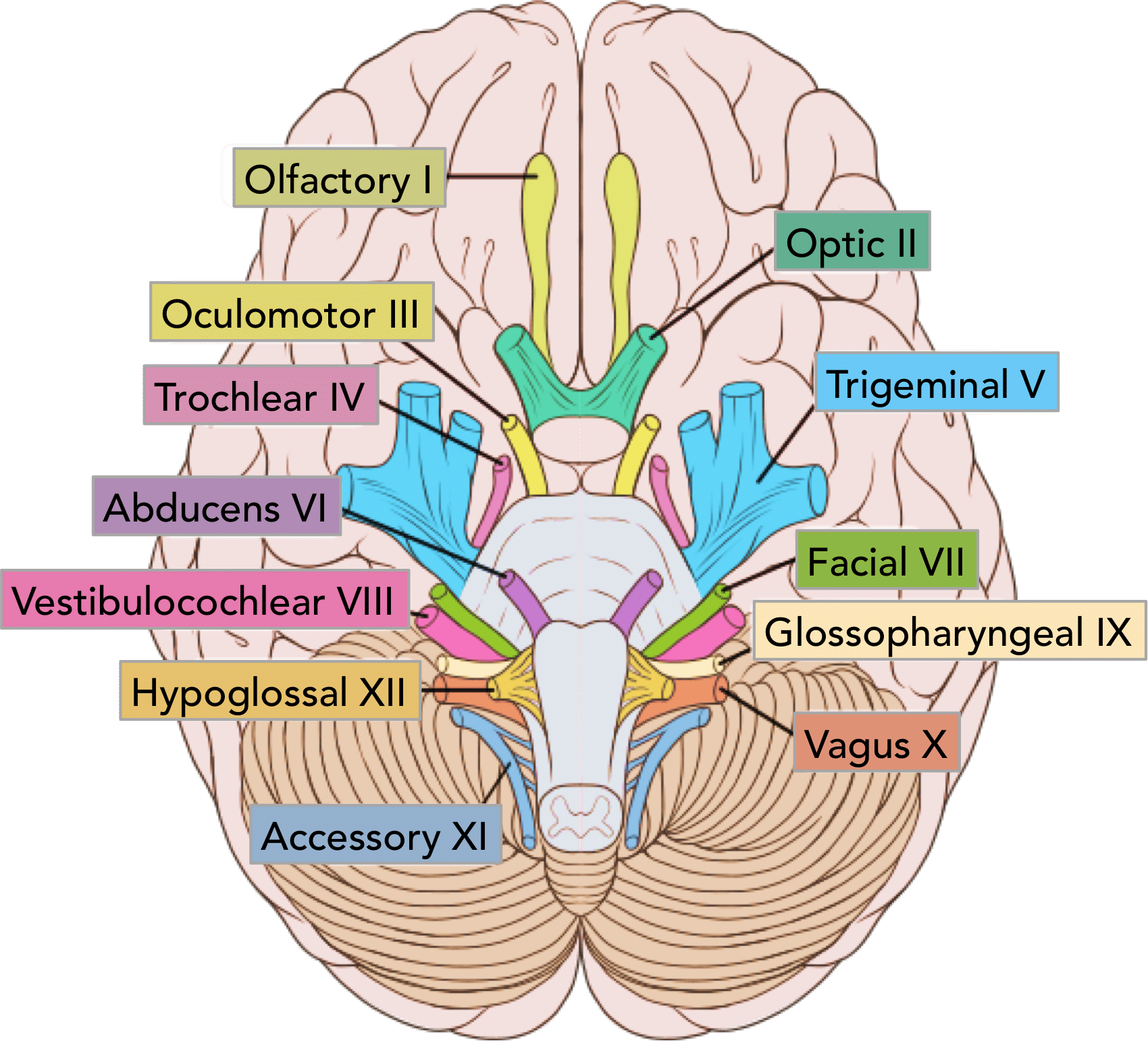
hypoglossal nerve
controls the muscles of the tongue
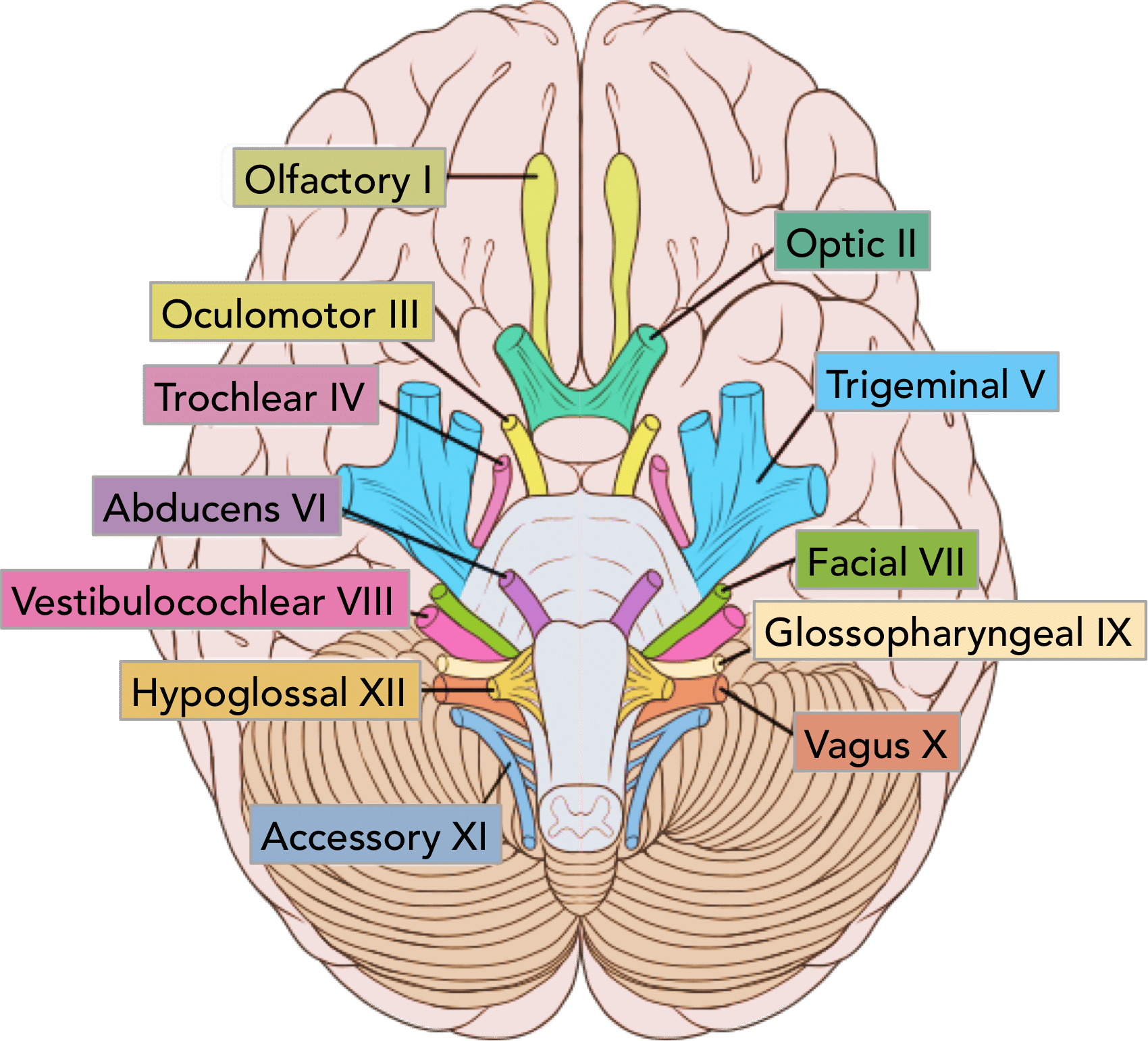
white matter
area that contains myeliniated axons forming sensory tracts
denticulate ligaments
lateral extensions of the pia matter that help anchor the spinal cord
lateral horn
houses cell bodies of autonomic motor neruons
ligamentum flavum
elastic connective tissure that connects the lamina of adjacent vertebrae
ventral root
contains axons of motor neurons
gray commissure
contains unmyelinated axons connecting left and right gray matter
vertebral arteries
carries blood to the brain and spinal cord
dura matter
outer most protective layer covering
dorsal root ganglion
contains cell bodies of sensory neurons
subarachnoid space
area of the spinal cord through which CSF flows
epidural space
area between the dura matter and vertebra, housesadipose, areolar tissue, and blood vessels
anterior median fissure
a deep grove on the anterior surface of the spinal cord
pia matter
delicate layer adhering to the spinal cord